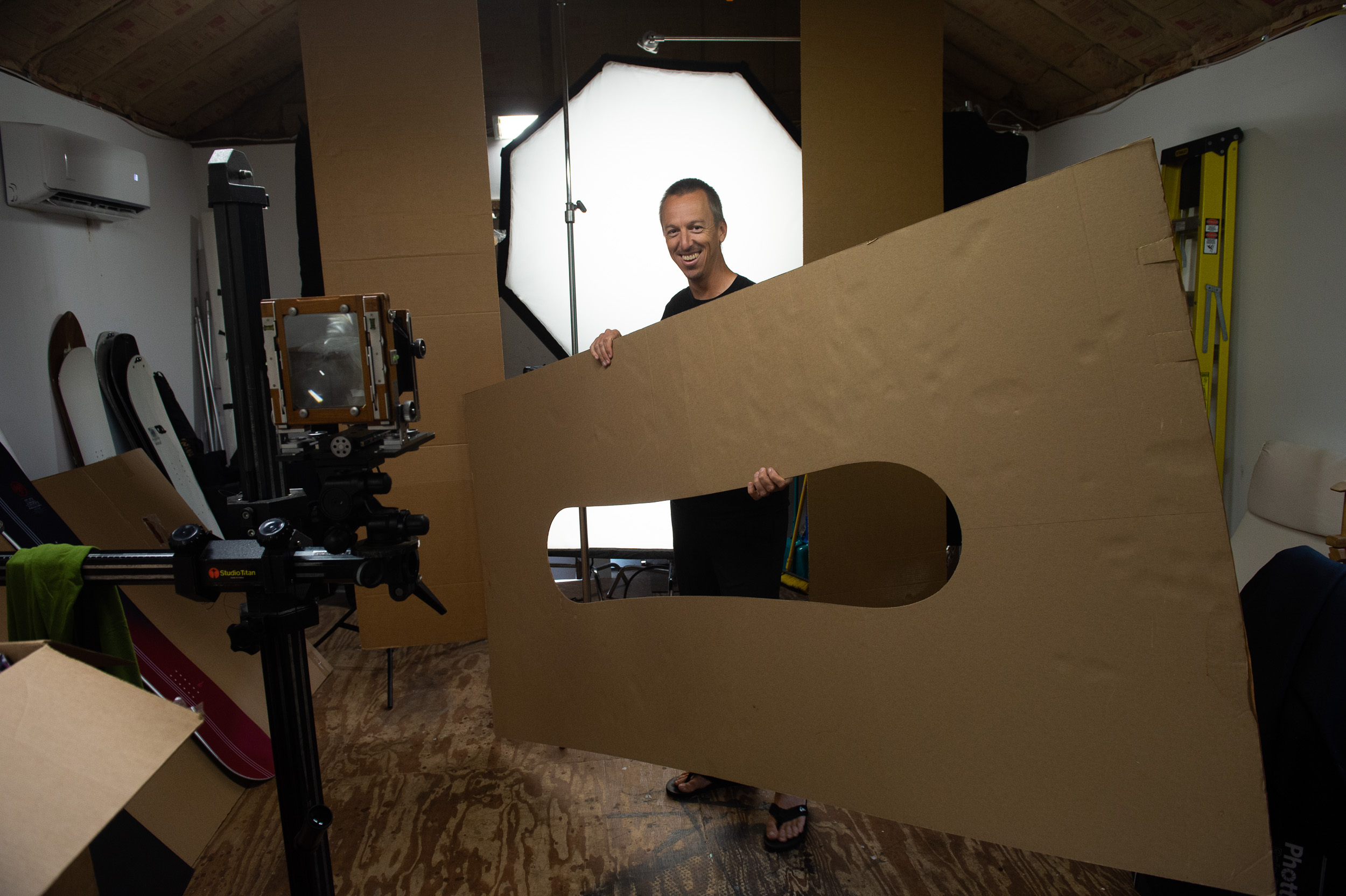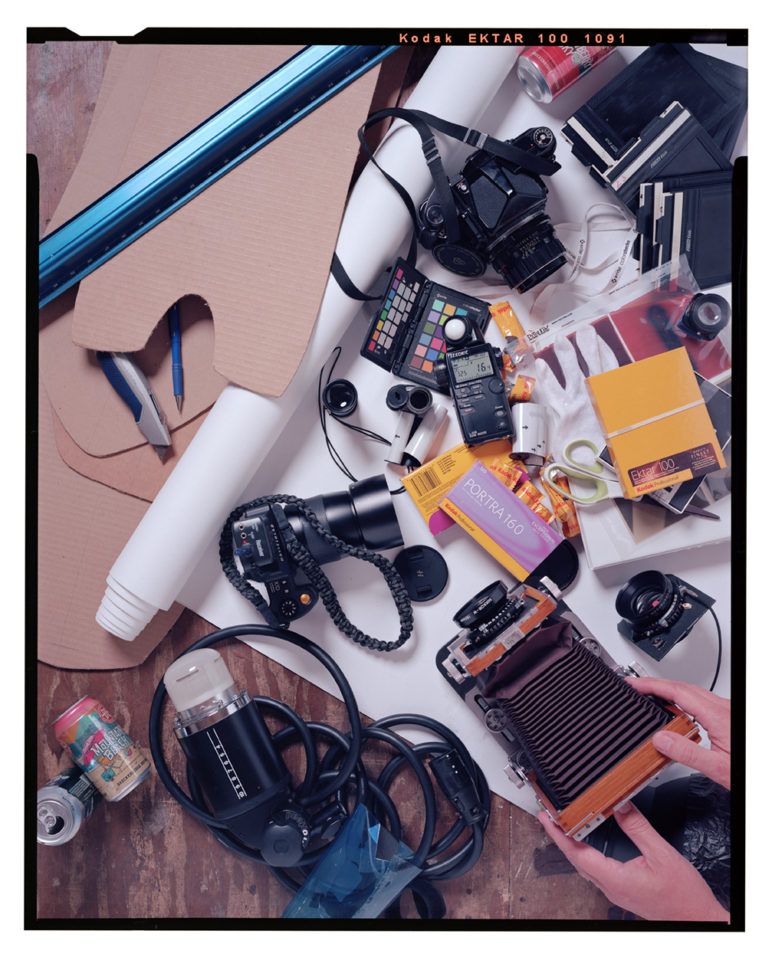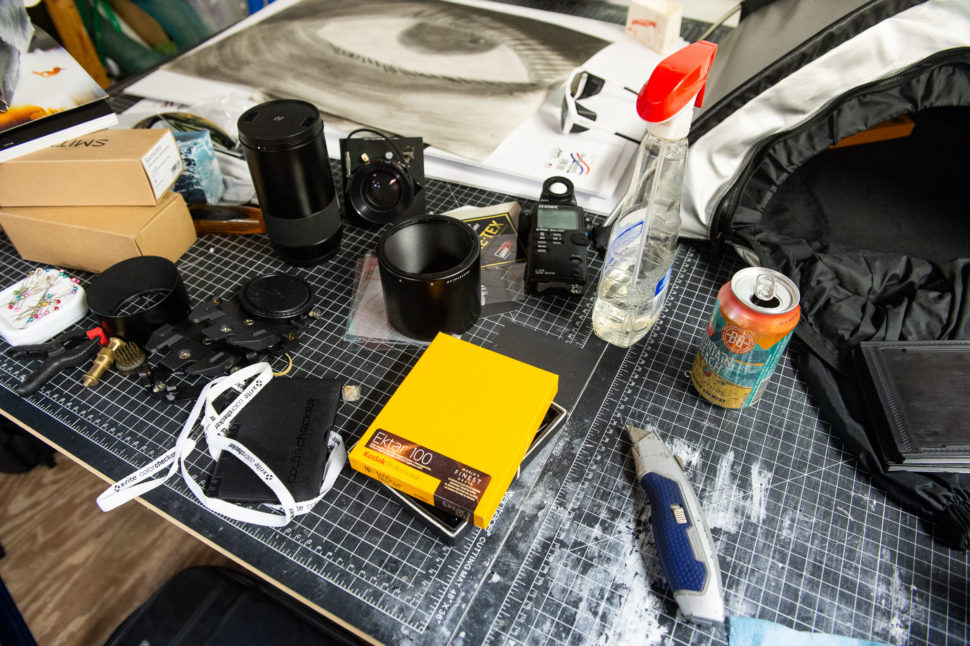Products You May Like
Mike Basher’s attention to detail in the photograpgic process.
One of the many things we take pride in here at Snowboard is the constant evolution of the aesthetic of our product photography. We set the bar high and don’t stop until we’re satisfied. That said, over the course of a month last summer, with lots of hands-on help from Mark Clavin, I shot all of the hardgoods, outerwear, and accessories featured in this issue in the studio. Now, we’re excited to unveil our freshest look yet, focused on this year’s gear.
For this issue, because sometimes we like to make things more complicated than they need to be, we decided to take a bit of a different approach to a big chunk of the following pages by photographing our Platinum Picks on film. Why, you may ask? Well, there are a few reasons. First, permanence. In a world of immediate consumption, we believe in the value of printed material. You can hold it and interact with it, and it stares at you right back in the face. It isn’t easily misplaced, as opposed to that Instagram story you were watching on an account that you now can’t recall. Print always lives on.
The same can be said for the pieces of photographic film on which these products have been immortalized. Aside from the obvious resulting images, a whole lot of preparation needed to happen before even loading film into the camera. First, there were months of brainstorming with the crew, developing concepts for each feature in the magazine. From there, each scene was handcrafted with extremely careful product styling and placement. This can be a study in creating order in chaos, as seen in the careful arrangements in Gear Up: Splitboard Supplies.
Gear Up: Staples was created by photographing each page’s gear arrangement, clipping out each product, then turning that clipping into a vector-based path, which was then cut out on a 40-watt laser. ( Yeah, we’ve got a laser. )The resulting cut-out was then placed miniature- scale onto the food backgrounds, and we went macro mode with the camera. The laser cut-outs created a realistic drop shadow of the product across the background, and the original product image was carefully laid over the cut-out for the final image. The resulting photographs show an interesting, skewed scale, with emphasis on the staple foods (enlarged to show texture, of course).
We went full arts and crafts with Platinum Picks: Shapes, carefully tracing around each snowboard on 4×8-foot sheets of cardboard I’ve been hanging onto for just the right situation. Once each shape was traced, the pressure was on, painstakingly cutting along the line with a razor blade. The exact cut-out of each board then became a giant mask, which we positioned the corresponding product just behind, then blasted it with a heavy dose of cool-temperature backlighting. Once the lights were set up for OCD-level exposure calculations, the camera was moved into position with pinpoint composition. Finally, the film was hand- developed and meticulously cared for. Each piece was then drum scanned in preparation for exacting art direction and our high-quality printing. This process was the perfect pairing for our Platinum Pick award winners, which represent the best gear out there—products that engineers have poured countless hours into and pros have put to the test the world over.
So, get in there, and feel the grain, experience the textures and the subtle imperfections that give the perfect marriage of film and paper its awesomely unique, lasting character.
This originally appeared in the fall 2022 issue of Snowboard Magazine. Order a copy of issue 19.1 soon!
Recipe: Snowboard Magazine Volume 19 Issue 1
Grease one oversized issue and prepare:
– twenty eight snowboards
– five splitboards
– seven bindings
– three helmets, each paired with goggles,
– six sets of outerwear
Open ingredients, and set aside at room temperature.
Prepare:
– five 4×8 sheets of repurposed cardboard,
– one 40-watt laser,
– two bags of dried pinto beans,
– two bags of unground coffee beans,
– one container of oatmeal
Load three cameras (Hasselblad X1, Pentax 67, and Chamonix 045n-2) with:
– two boxes of Kodak Ektar 100 4×5 film,
– twelve rolls of Kodak Portra 160 medium format film
Marinate products with:
– three Profoto packs
– five Profoto heads
– various light modifiers, to taste
Brine film with:
One liter of CineStill Cs41 developer for 3.5 minutes or until golden orange.
Recommended:
Add a can or two of Breckenridge Brewery’s Mountain Beach to taste.
Work ingredients until well done.
Bake in:
One drum scanner, powered by 1998 Power Macintosh G3 computer at Five Thousand DPI
Leftovers keep for months, and are best savored with friends.


